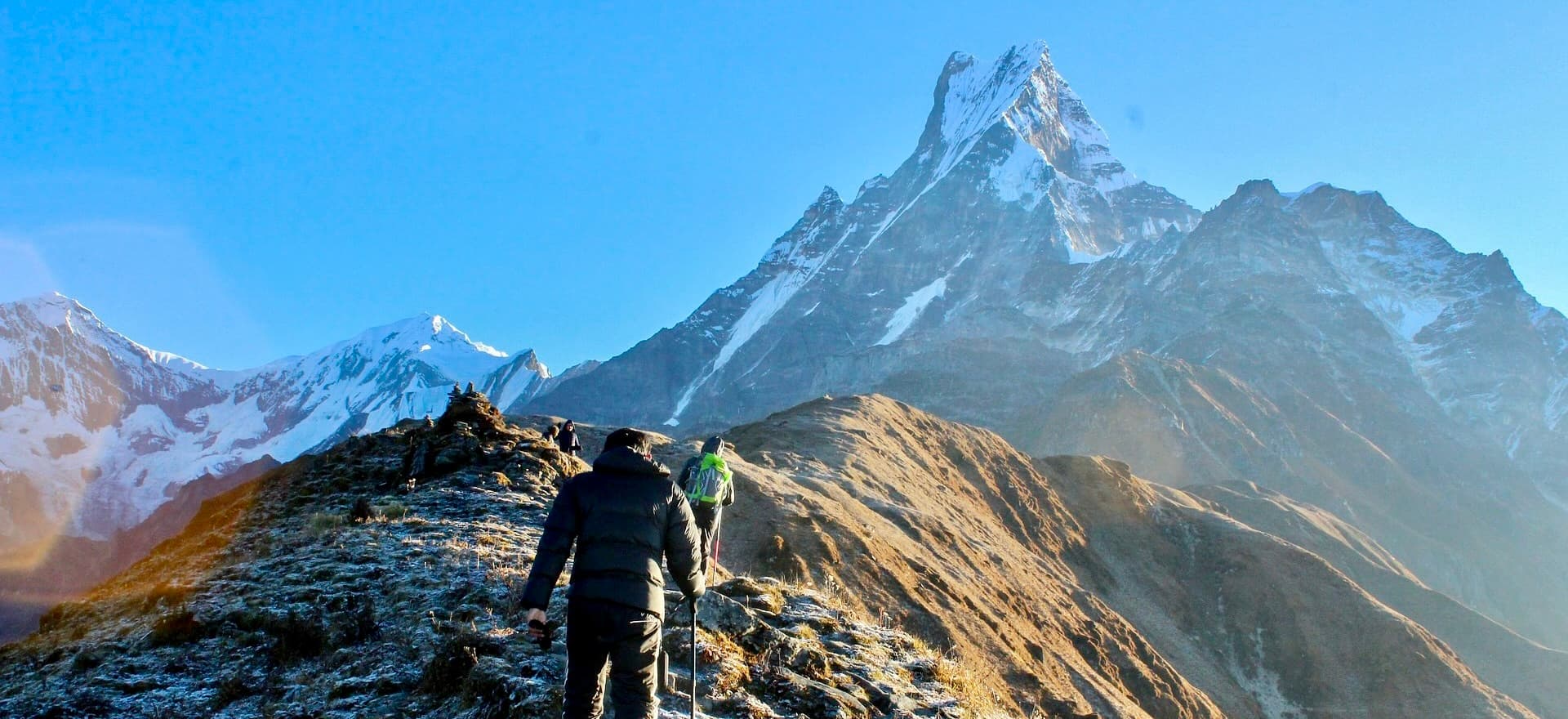Ever stood at the edge of the Himalayas, prayer flags snapping in the wind, wondering if your packing list includes everything you need for trekking in Nepal? You're not alone.
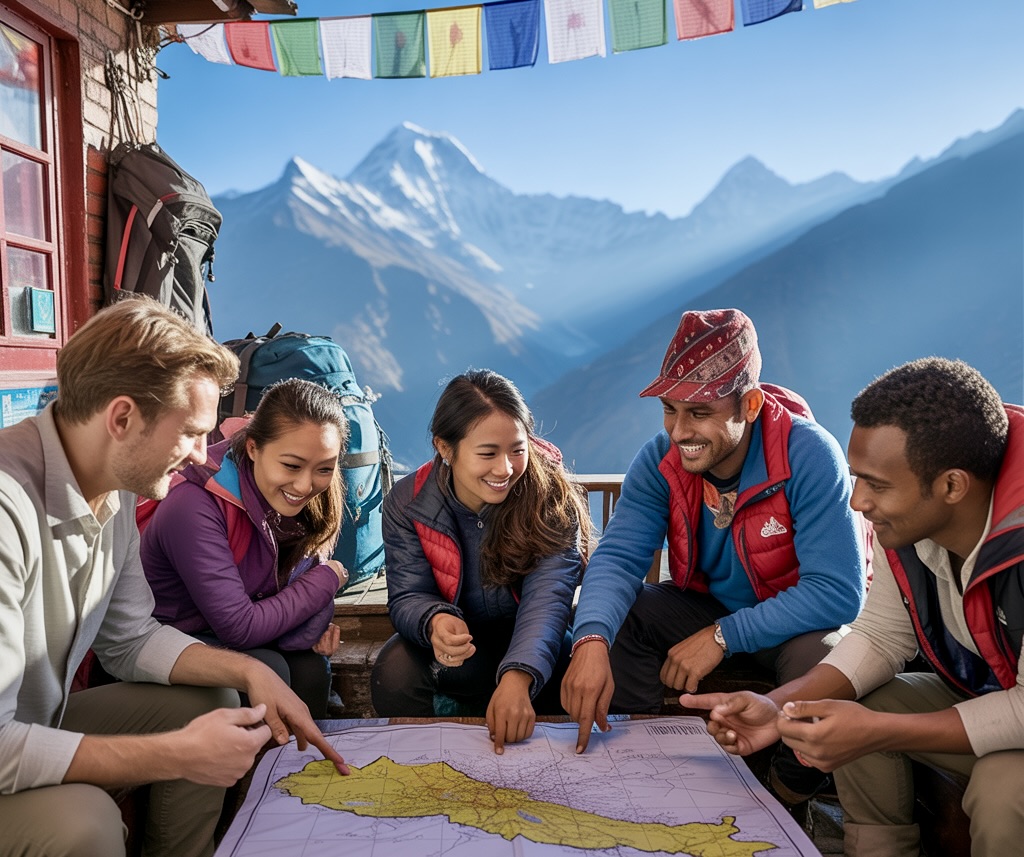
First-time travel to Nepal stirs a cocktail of excitement and anxiety that only proper preparation can settle. Nepal's mesmerizing landscape offers everything from snow-capped peaks to lush jungles, ancient temples to adrenaline-pumping adventures.
This guide delivers exactly what new visitors to Nepal need: practical advice on visas, best seasons to visit, essential packing tips, and cultural etiquette that will make your journey smooth.
But here's what most travelers discover too late about visiting Nepal's sacred sites...
Understanding Nepal: Your Gateway to the Himalayas
Geographic overview and best regions to visit
Nepal might be small (about the size of Tennessee), but what we pack into this little country is nothing short of magnificent. Tucked between India and Tibet, our landscape rises dramatically from just 70 meters above sea level to the roof of the world at 8,848 meters (Mount Everest).
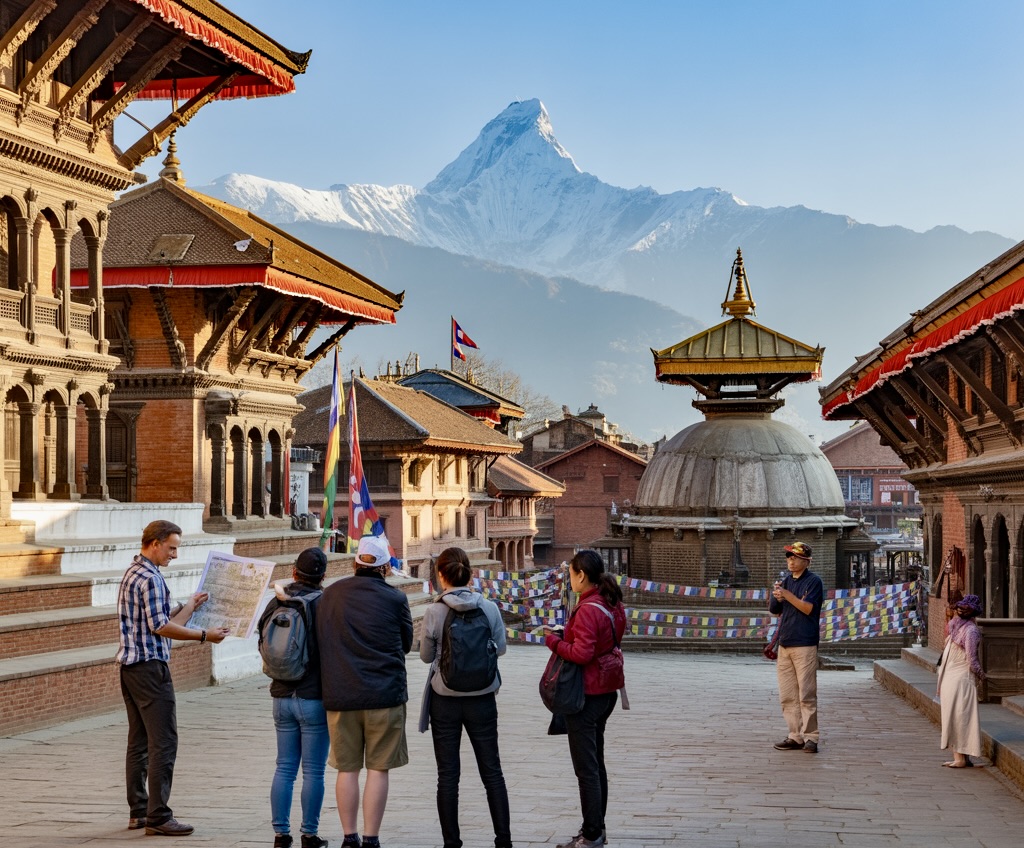
For first-timers, we recommend these can't-miss regions:
- Kathmandu Valley: Our capital region houses seven UNESCO World Heritage sites within a 15-kilometer radius. The perfect starting point!
- Pokhara: The gateway to the Annapurna range offers lakeside relaxation and adventure sports.
- Chitwan National Park: Want to see rhinos and tigers? This is your spot for wildlife.
- Everest Region: Trek through Sherpa villages with views that literally take your breath away.
- Lumbini: The birthplace of Buddha provides spiritual depth to any journey.
Cultural richness and diversity
Walk down any street in Nepal and you'll encounter a living museum of cultures. With over 125 ethnic groups and 123 languages, our diversity is our pride.
The harmony between Hindu and Buddhist traditions creates a unique spiritual landscape you won't find anywhere else. We celebrate more festivals than there are days in the year! Time your visit right, and you might witness Dashain (our biggest celebration) or the colorful powder-throwing festival of Holi.
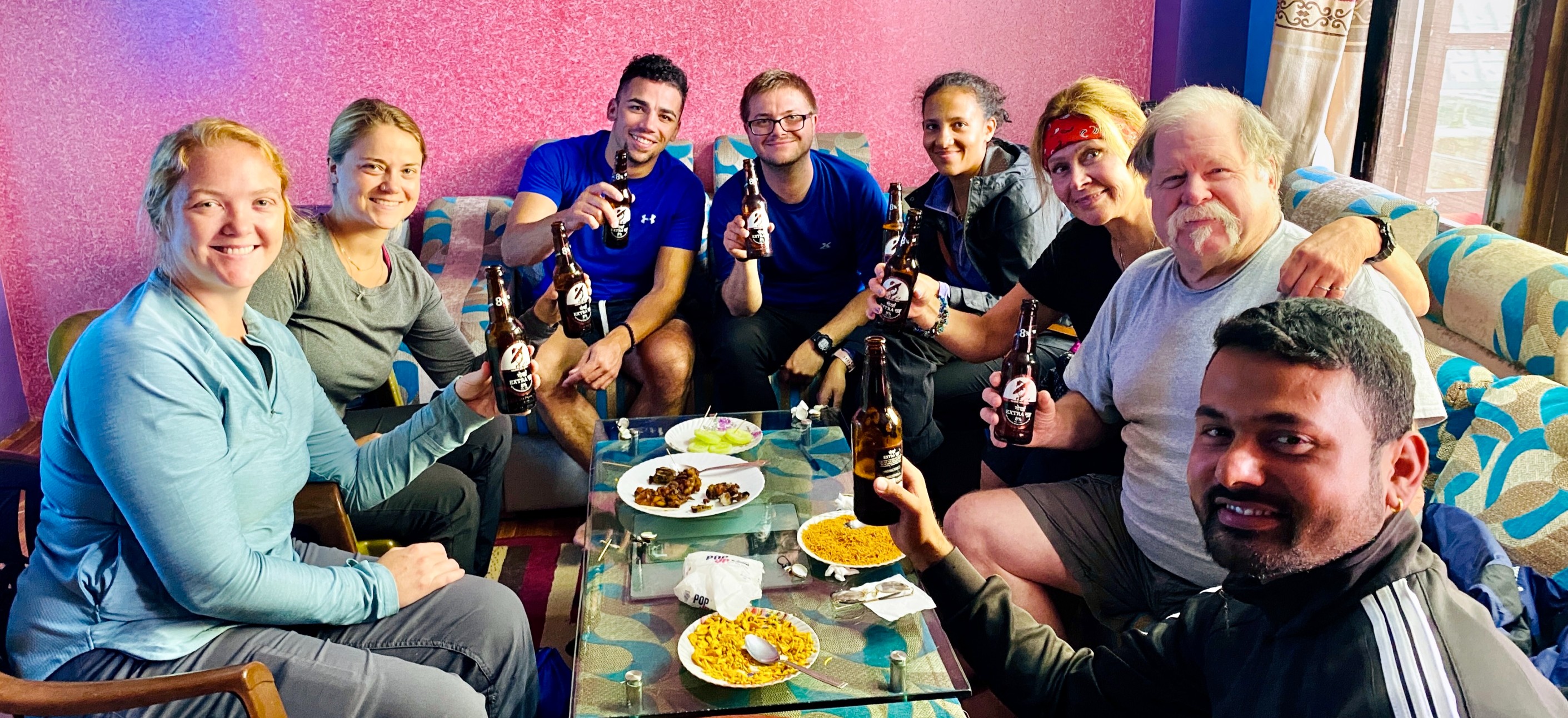
Our architecture tells stories through intricately carved wooden windows and doorways. The pagoda-style temples (which we actually exported to East Asia) feature multiple-tiered roofs that seem to touch the heavens.
Best seasons to plan your journey
The timing of your visit makes all the difference:
|
Season |
Months |
What to Expect |
|
Spring |
March-May |
Rhododendron forests in bloom, clear mountain views, perfect trekking |
|
Summer/Monsoon |
June-August |
Lush landscapes, fewer tourists, some rain-affected trails |
|
Autumn |
September-November |
Crystal-clear skies, major festivals, peak trekking season |
|
Winter |
December-February |
Chilly mountains but sunny days, crowd-free trails, bargain rates |
For first-timers, we strongly recommend autumn. The weather's just right, and the cultural calendar is packed.
Essential Nepali phrases for travelers
Connecting with locals transforms good trips into unforgettable ones. We've found these simple phrases open doors everywhere:
Namaste (Nah-mas-tay): Our universal greeting with hands pressed together
Dhanyabad (Dhan-ya-baad): "Thank you"
Kati ho? (Kah-tee ho): "How much is it?"
Ramro cha (Ram-ro cha): "Good" or "It's nice"
Maf garnus (Maaf gar-noos): "Excuse me/Sorry"
Khana khanu bhayo? (Kha-na kha-nu bha-yo): "Have you eaten?" (Our way of asking "How are you?")
Don't worry about perfect pronunciation—we appreciate the effort more than the execution!
Planning Your Nepal Adventure
Visa Requirements and Application Process
Getting a Nepal visa is super easy! Most travelers can obtain it on arrival at Tribhuvan International Airport in Kathmandu or at land entry points. We've helped countless clients breeze through this process. Here's what you need:
- Valid passport with at least 6 months validity
- Completed application form (available at arrival)
- Recent passport-sized photo
- Visa fee in USD (credit cards accepted at the airport)
Current visa fees:
|
Duration |
Cost (USD) |
|
15 days |
$30 |
|
30 days |
$50 |
|
90 days |
$125 |
Pro tip: Have exact change ready and complete the online form at nepaliimmigration.gov.np before arrival to save time.
Recommended Trip Duration for First-Timers
We strongly recommend 10-14 days for your first Nepal trip. This gives you enough time to experience Kathmandu's cultural treasures, enjoy the peaceful atmosphere of Pokhara, and complete a shorter trek without rushing.
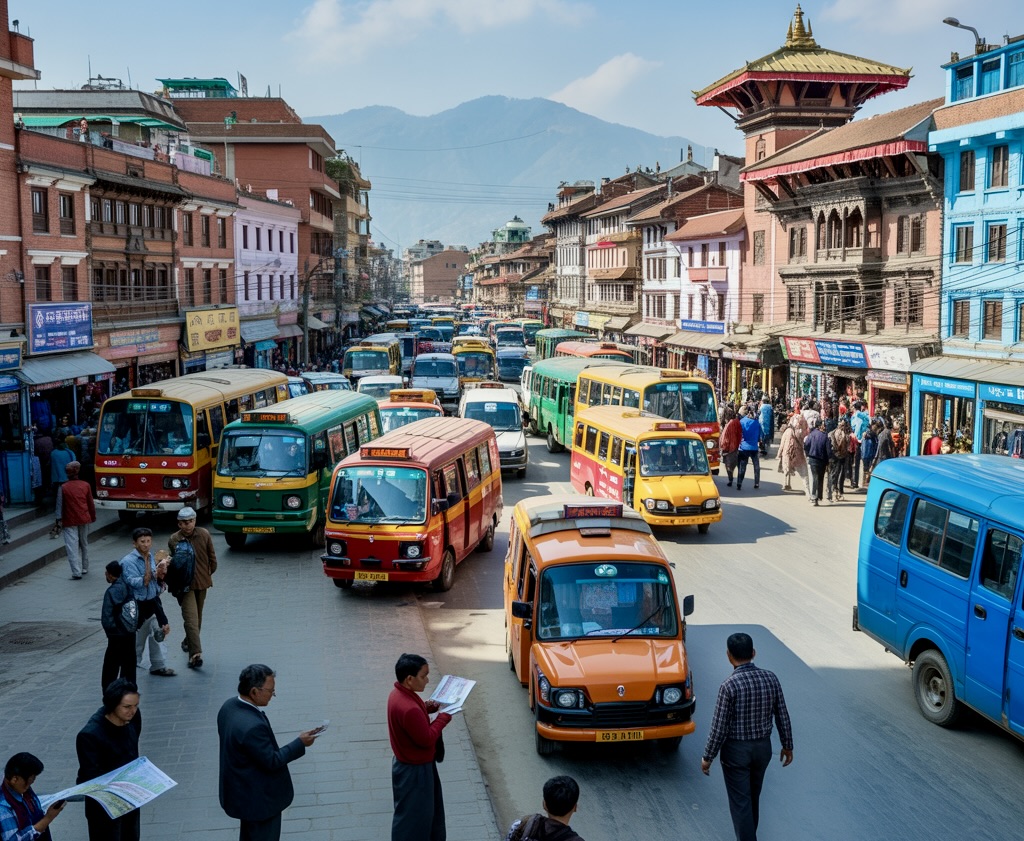
Too many first-timers try to cram everything into a week and miss the true magic of Nepal. The country deserves time - there's the initial adjustment to the altitude, the winding mountain roads between destinations, and those unexpected moments that become your favorite memories.
For those planning to trek to Everest Base Camp or complete the Annapurna Circuit, budget at least 14-18 days total, including rest days in Kathmandu before and after.
Budgeting Wisely: Costs and Currency Information
Nepal offers incredible experiences for every budget. Our clients typically spend:
- Budget travelers: $30-50/day
- Mid-range: $50-100/day
- Luxury: $100-300+/day
The Nepalese Rupee (NPR) is the local currency. ATMs are readily available in major cities and tourist areas, but we always recommend carrying some cash, especially when heading to remote trekking regions.
Daily expenses breakdown:
|
Expense |
Budget (USD) |
Mid-range (USD) |
Luxury (USD) |
|
Accommodation |
$5-15 |
$20-50 |
$60+ |
|
Meals |
$10-15 |
$15-30 |
$30+ |
|
Transportation |
$5-10 |
$10-20 |
$20+ |
Credit cards are accepted in established hotels and restaurants in major cities, but always carry cash for smaller establishments and villages.
Packing Essentials for Varying Altitudes and Activities
Nepal's diverse landscapes mean you'll need gear for multiple climates. We've seen travelers freeze on treks and sweat in Kathmandu because they weren't prepared.
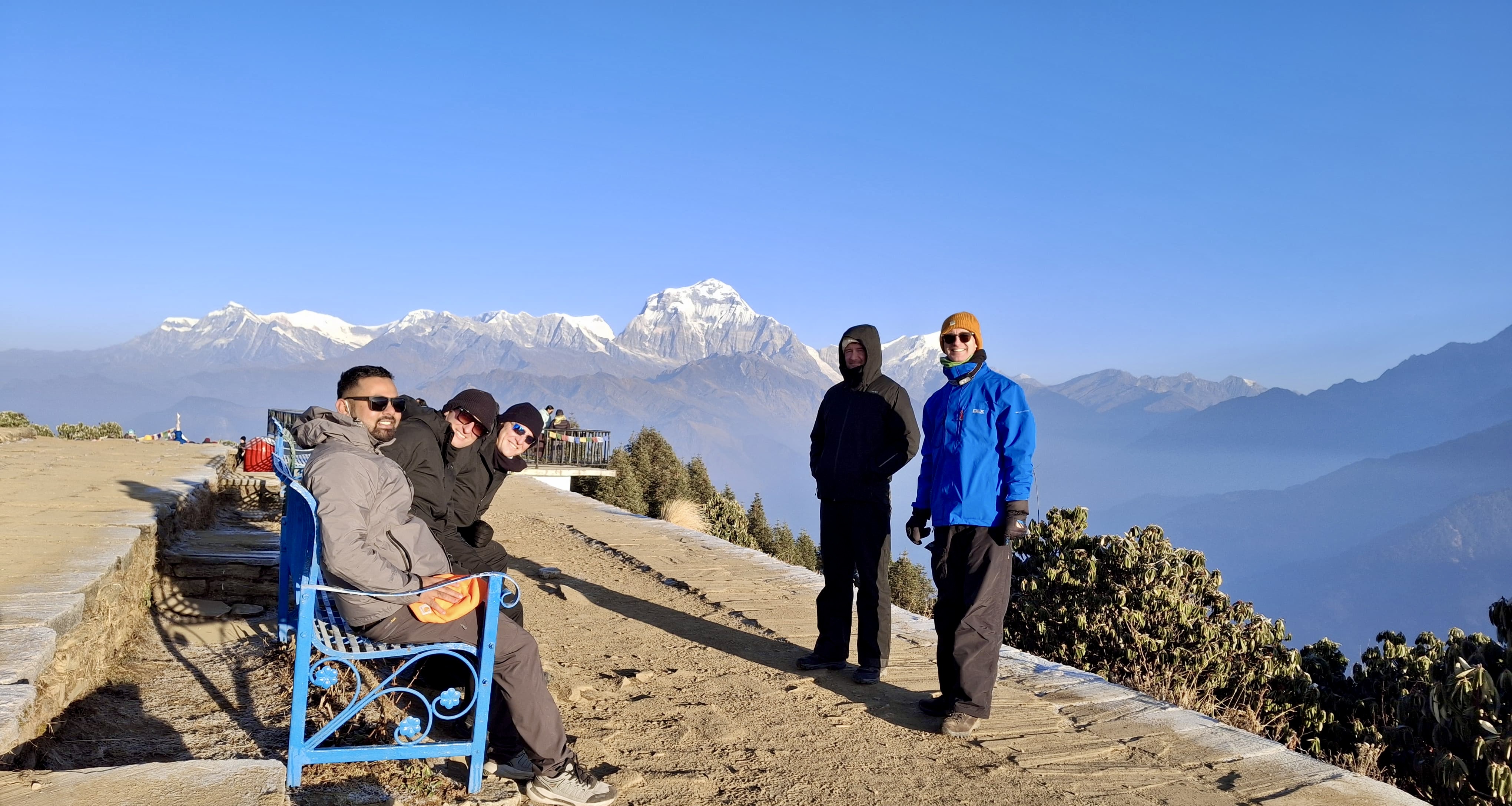
Must-packs for any Nepal trip:
- Layers! Think thermal base layers, fleece mid-layers, and a waterproof/windproof outer layer
- Good quality hiking boots (broken in before arrival)
- Sunscreen, sunglasses, and a hat (the Himalayan sun is intense)
- Portable water purifier or treatment tablets
- Portable power bank (power outages happen)
- Small medical kit with altitude sickness medication
For trekking, add:
- Trekking poles
- Sleeping bag (rated for below freezing)
- Headlamp with extra batteries
For cultural explorations:
- Modest clothing covering shoulders and knees for temple visits
- Comfortable walking shoes for uneven streets and steps
Health Preparations and Vaccinations
We take your health seriously while traveling in Nepal. Most travelers should get these vaccinations before arrival:
- Hepatitis A and B
- Typhoid
- Tetanus
- Japanese Encephalitis (depending on itinerary)
Visit your doctor at least 4-6 weeks before your trip. For trekking above 2,500m, discuss altitude sickness prevention - we usually recommend Diamox for our clients attempting higher altitude treks.
Travel insurance is absolutely essential! Make sure it covers:
- Emergency evacuation (including helicopter rescue)
- Medical treatment
- Trip cancellation
- Coverage for your specific activities (especially trekking)
Bring any prescription medications you need for your entire stay, as specific brands may not be available. Don't forget a basic first aid kit with medicine for stomach issues, pain relief, and any personal medications.
Top Destinations for First-Time Visitors
Exploring vibrant Kathmandu Valley
Kathmandu Valley is where Nepal's heart beats loudest. We've guided countless travelers through this UNESCO World Heritage treasure trove, home to seven protected monument zones. The medieval city squares of Kathmandu, Patan, and Bhaktapur will transport you centuries back in time.
In Kathmandu, we always take our guests to Durbar Square, where ancient temples and palaces showcase incredible woodcarving and architecture. Swayambhunath (the Monkey Temple) offers panoramic views of the entire valley – perfect for that first "I'm really in Nepal" moment.
Patan's Durbar Square feels more intimate and less crowded. We love watching visitors' faces light up when they discover the hidden courtyards and the stunning Krishna Temple.
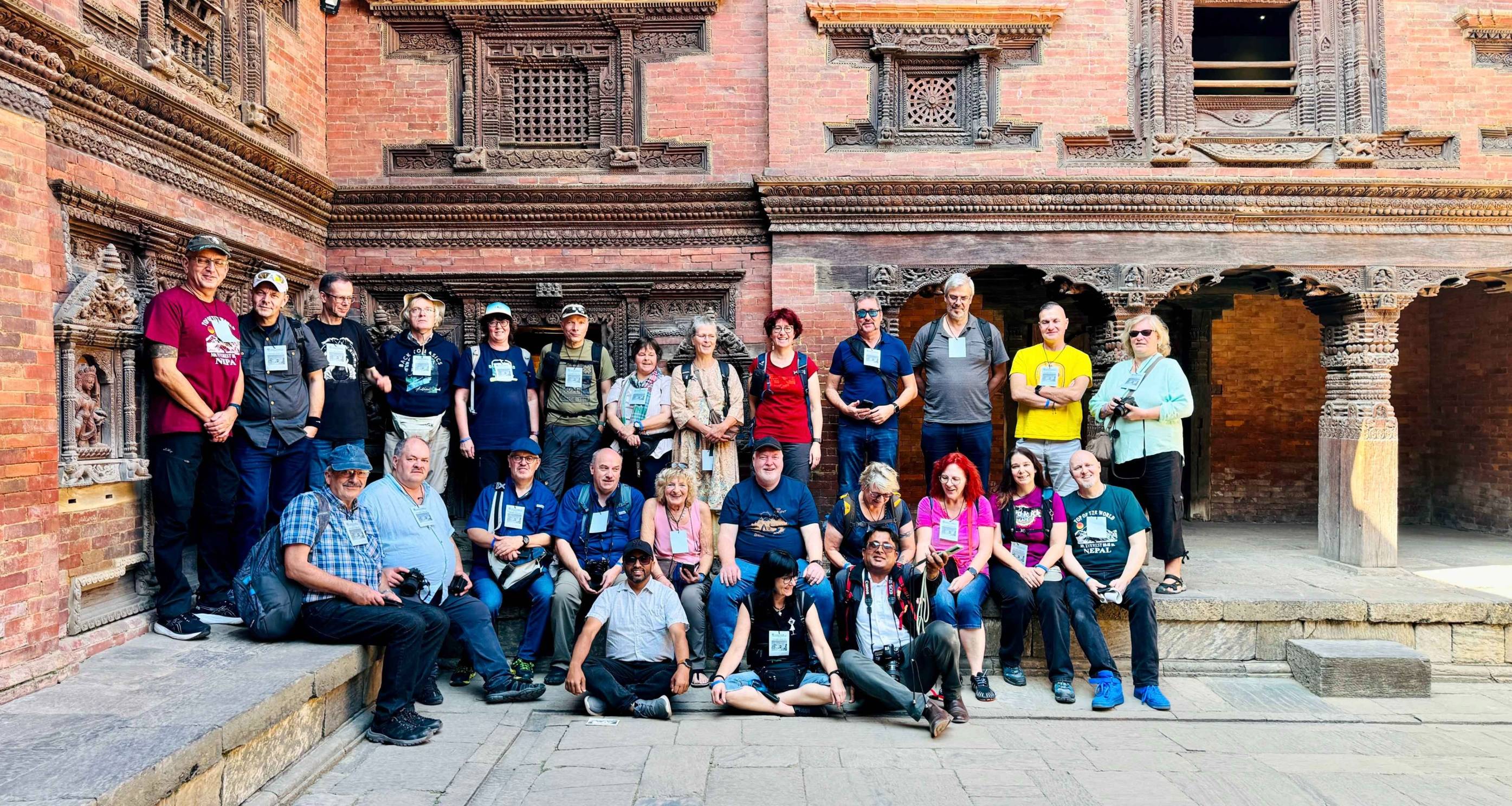
Bhaktapur is our personal favorite for first-timers. With no traffic in its ancient core, you can wander the narrow brick lanes, admire the intricate wood carvings, and feel like you've truly stepped back in time.
Tranquil lakeside experiences in Pokhara
Pokhara is our go-to recommendation when travelers need to catch their breath. Just a 30-minute flight from Kathmandu, this lakeside paradise sits beneath the majestic Annapurna range.
We often start our mornings here with coffee at a lakeside café, watching the sun illuminate the snow-capped peaks reflected in Phewa Lake. For the best views, we take guests on an early boat ride – the mountains are clearest before clouds roll in.
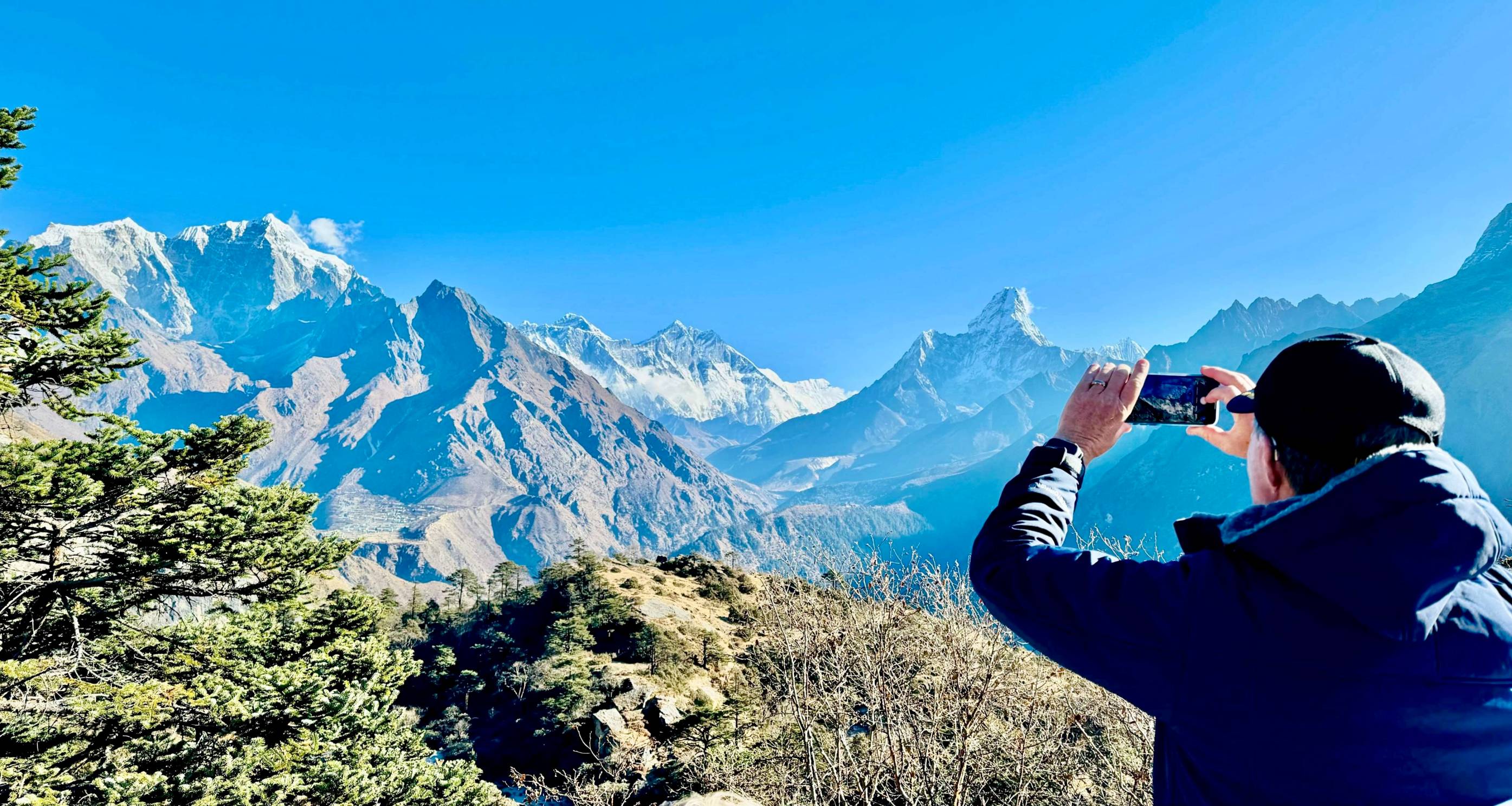
Adventure seekers are never disappointed in Pokhara. Paragliding here gives you the rare experience of soaring with Himalayan griffon vultures while gazing at 8,000m peaks. The World Peace Pagoda hike is rewarded with spectacular views across the lake to the mountains.
When the day winds down, nothing beats watching sunset from one of the lakeside restaurants. The orange glow on Machapuchare (Fishtail Mountain) is something we never tire of sharing with our guests.
Wildlife encounters in Chitwan National Park
Chitwan National Park gives our guests their first taste of subtropical Nepal – a stark contrast to the mountains. Just a 6-hour drive from Kathmandu, this UNESCO site protects some of Asia's most impressive wildlife.
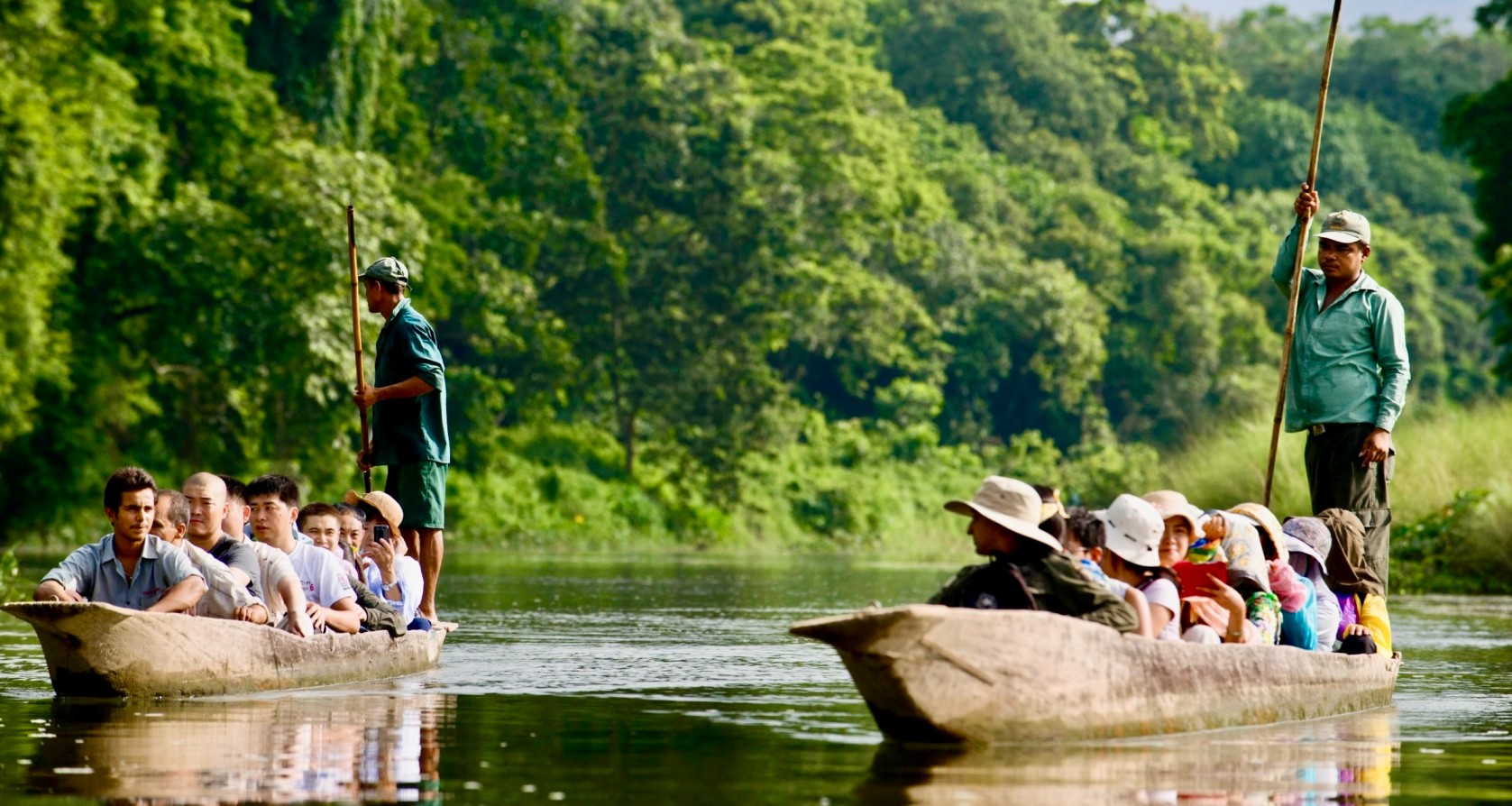
We've guided countless wide-eyed visitors on jeep safaris through grasslands and sal forests. Spotting your first wild rhino is unforgettable – these prehistoric-looking creatures often graze peacefully just meters from our jeeps. If you're lucky (and we often are), you might glimpse the elusive Bengal tiger.
Canoe trips down the Rapti River offer close encounters with gharial crocodiles and numerous bird species. Walking safaris with our expert naturalist guides reveal the smaller wonders – deer, monkeys, and over 500 bird species.
Our favorite Chitwan experience? Elephant observation at sunset. Unlike riding these magnificent creatures, ethical observation lets you see these gentle giants bathing and socializing naturally.
Spiritual journey to Lumbini, birthplace of Buddha
We take many travelers seeking deeper meaning to Lumbini, where Prince Siddhartha Gautama was born in 563 BCE. The sacred garden where Buddha took his first steps spans 4 square miles and creates an atmosphere of profound peace.

The Maya Devi Temple marks the exact birthplace, housing ancient ruins and the marker stone pinpointing where Buddha was born. Standing here, we've seen even non-spiritual travelers moved by the site's significance.
The Ashoka Pillar, erected in 249 BCE by Emperor Ashoka, provides tangible proof of Buddha's birthplace. Around these ancient monuments, the international Buddhist community has built monasteries representing different countries and traditions – from Tibetan to Thai, Japanese to Myanmar.
We recommend spending at least one night in Lumbini. The evening prayer ceremonies, with monks chanting by candlelight, create an atmosphere that simply can't be experienced during day trips.
Trekking Options for Beginners
Annapurna Base Camp: the perfect first trek
If you're just starting your trekking journey, we can't recommend Annapurna Base Camp enough. This trek hits the sweet spot of challenge and reward. The trail takes you through charming villages, rhododendron forests, and ultimately to the amphitheater of mountains at the base camp.
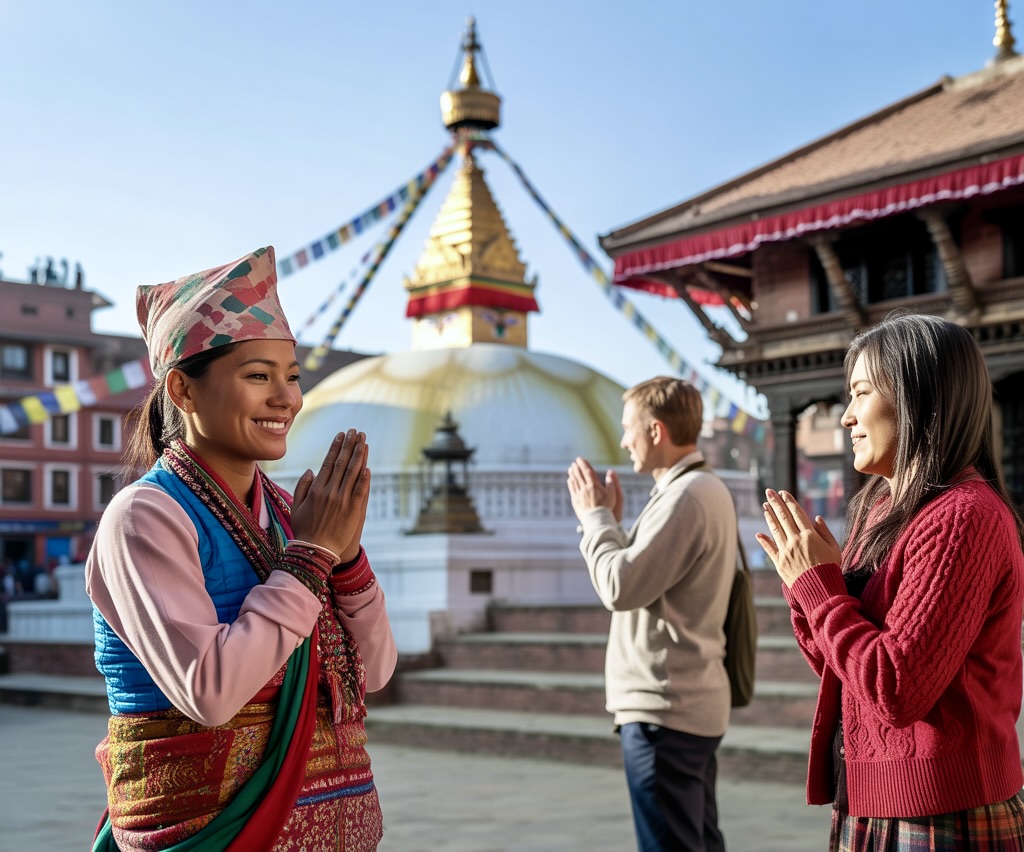
We've guided countless first-timers on this route, and they're always blown away by how accessible such spectacular mountain views can be. The trek typically takes 7-12 days, depending on your pace, making it perfect for those with limited vacation time.
What makes this trek beginner-friendly is the gradual ascent, comfortable teahouses along the way, and the option to customize your itinerary. The highest point sits at 4,130m – high enough to feel accomplished without extreme altitude concerns.
Everest View Trek: experience the world's highest peak
Not ready for the full Everest Base Camp trek? No problem. We offer the Everest View Trek that gives you those jaw-dropping Everest moments without pushing your limits too far.
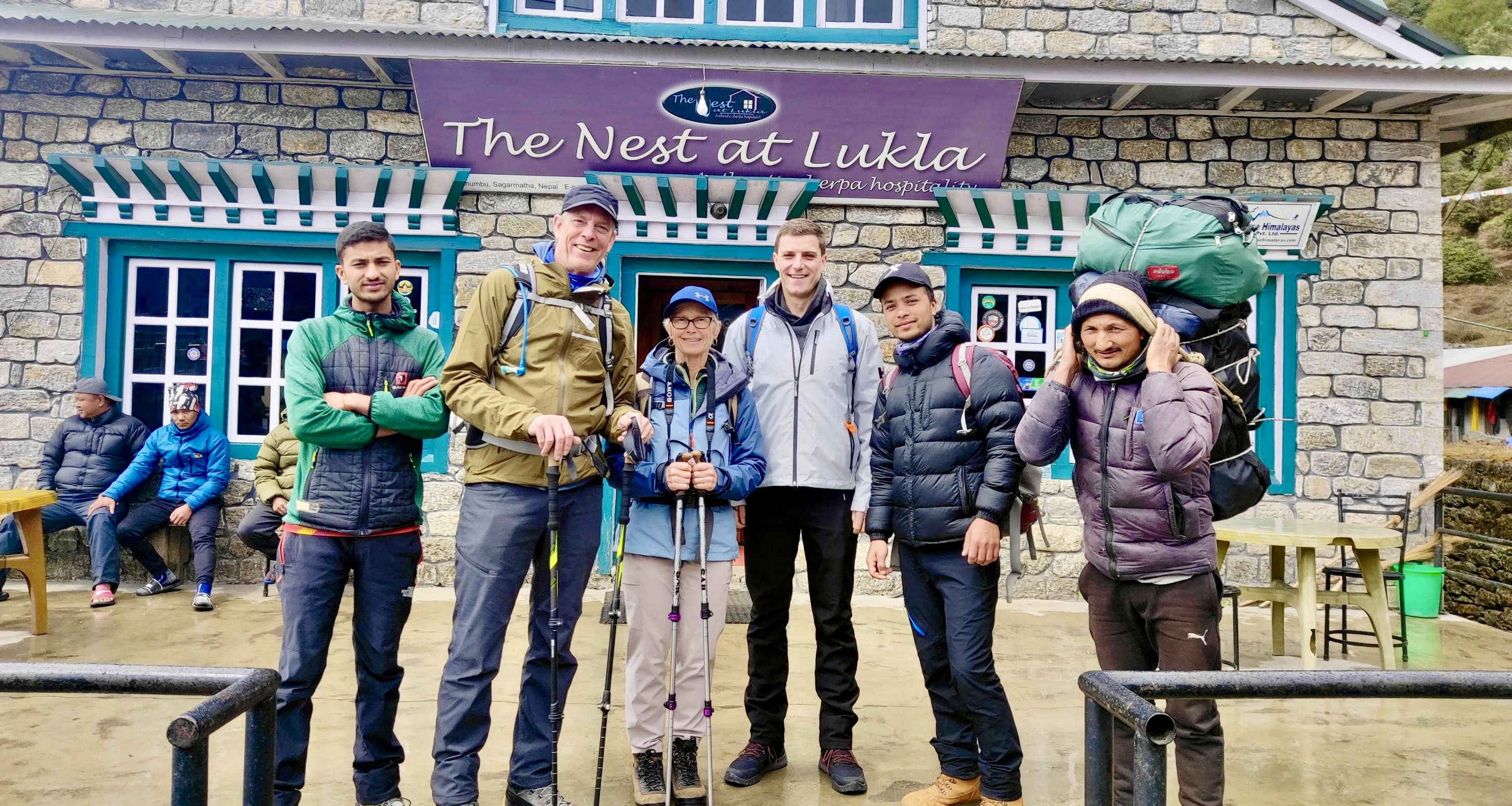
This shorter trek (usually 5-7 days) takes you to Tengboche Monastery, where the panorama of Everest, Lhotse, and Ama Dablam will stop you in your tracks. Starting with the thrilling flight to Lukla, you'll experience the famous Sherpa culture, visit Namche Bazaar, and still get those Instagram-worthy Everest shots.
The max elevation on this trek reaches about 3,867m at Tengboche, making acclimatization more manageable for beginners. We've found this trek perfect for those who want bragging rights of seeing Everest without committing to the full three-week expedition.
Langtang Valley: less crowded, equally spectacular
Seeking solitude on your first trek? Langtang Valley is our hidden gem. Just a short drive from Kathmandu, this trek offers stunning mountain views, fascinating Tamang culture, and significantly fewer trekkers than the Annapurna or Everest regions.
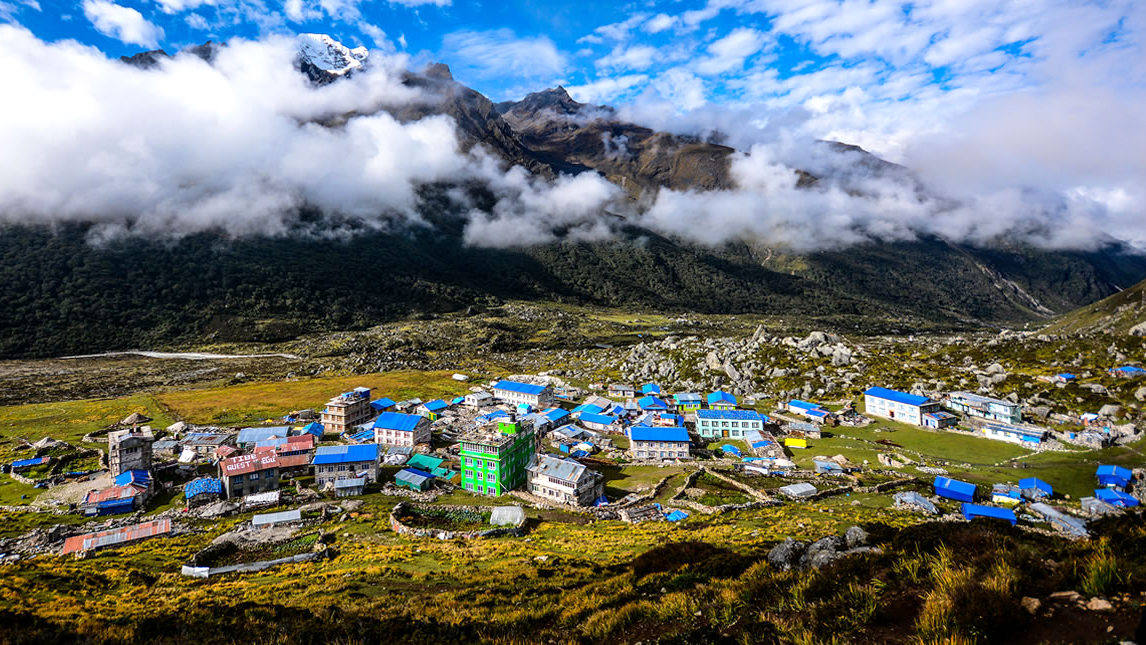
The Langtang Valley trek typically takes 7-10 days, with a high point around 3,870m at Kyanjin Gompa. What we love about this route is how quickly you get into the mountains – no long approach walks here!
The trail follows the beautiful Langtang Khola river, passing through forests, yak pastures, and traditional villages. After the 2015 earthquake, local communities have rebuilt with incredible resilience, and your visit directly supports their recovery.
Essential gear and physical preparation
We always tell our first-time trekkers: you don't need a mountain of gear, just the right stuff. Here's what we consider essential:
- Quality hiking boots (broken in before arrival)
- Layered clothing (think onion principle)
- A good daypack (30-40L)
- Trekking poles to save your knees
- Water purification method
For physical prep, we recommend starting at least 2-3 months before your trek. Focus on:
- Regular cardio (45-60 minutes, 3-4 times weekly)
- Stair climbing or hill walking with a loaded pack
- Strength training for legs and core
Even moderate fitness will make your trek more enjoyable. We've seen people of all ages and fitness levels complete these treks – it's about pacing yourself and listening to your body.
Understanding teahouse accommodations
Teahouses are the backbone of Nepal's trekking infrastructure. We tell our clients to think of them as simple mountain lodges rather than hotels. Most rooms are twin-share with basic beds and minimal furnishings.
Bathrooms are typically shared, and hot showers (where available) usually cost extra ($2-5). Most teahouses offer a common dining area with a central stove – this becomes the social hub where trekkers from around the world share stories.
The food menu is surprisingly varied, offering everything from traditional Dal Bhat (rice and lentils) to pizza and apple pie. We always suggest sticking to vegetarian options as you ascend higher.
Prices increase with altitude (basic economics of porter-carried supplies), so budget accordingly. Expect to pay around $5-15 per night for accommodation, with meals costing $3-10 each, depending on what you order and your elevation.
Navigating Local Transportation
Domestic flights: saving time between destinations
Getting around Nepal can be challenging due to the mountainous terrain, but domestic flights are a game-changer for travelers with limited time. We've seen countless visitors maximize their Nepal experience by flying between major destinations.
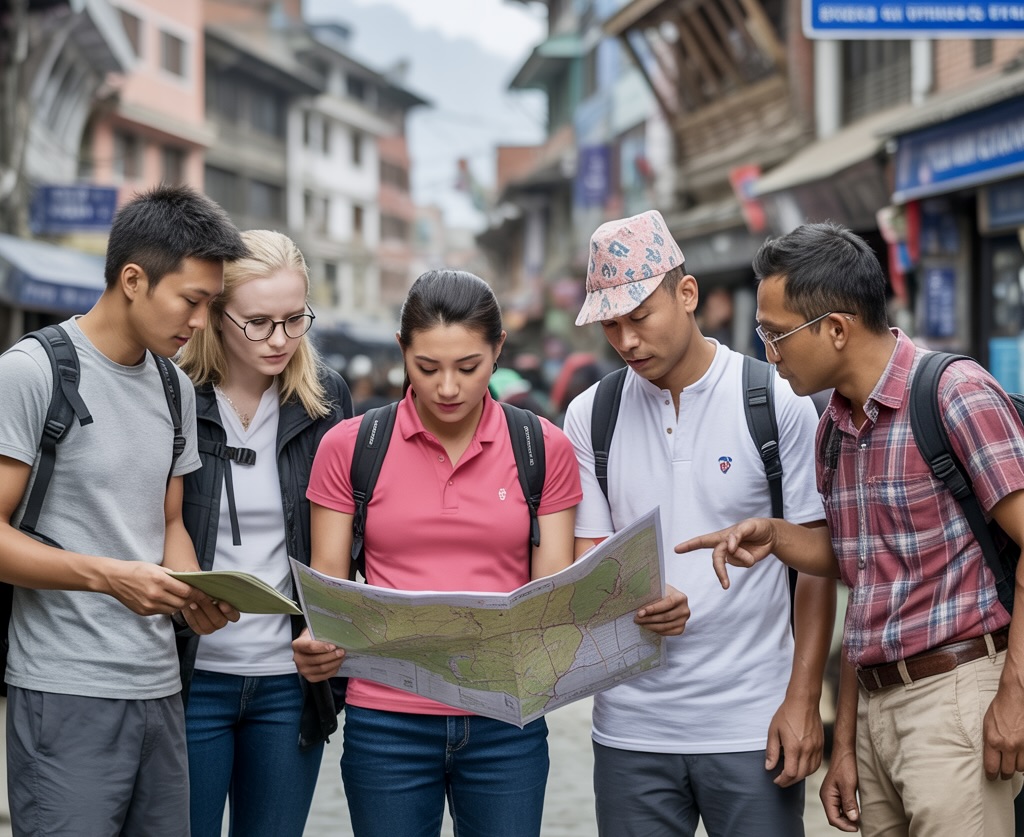
From Kathmandu, you can reach Pokhara in 25 minutes (versus 7+ hours by road) or Lukla (the gateway to Everest) in just 30 minutes. These short flights typically cost between $100-180 one-way, but the time saved is worth every penny.
Several reliable airlines operate in Nepal, including Buddha Air, Yeti Airlines, and Tara Air. We recommend booking flights a few days in advance during peak season (October-November and March-April) as they fill up quickly.
Keep in mind that mountain weather can cause delays or cancellations, especially in Lukla. Always build some flexibility into your itinerary if flying to remote destinations.
Public buses vs. tourist buses: making the right choice
Public local buses are dirt cheap (around $3-7 for longer journeys) and give you an authentic Nepali experience. They're often packed with locals, livestock, and goods—quite the adventure! But comfort? Not their strong suit.
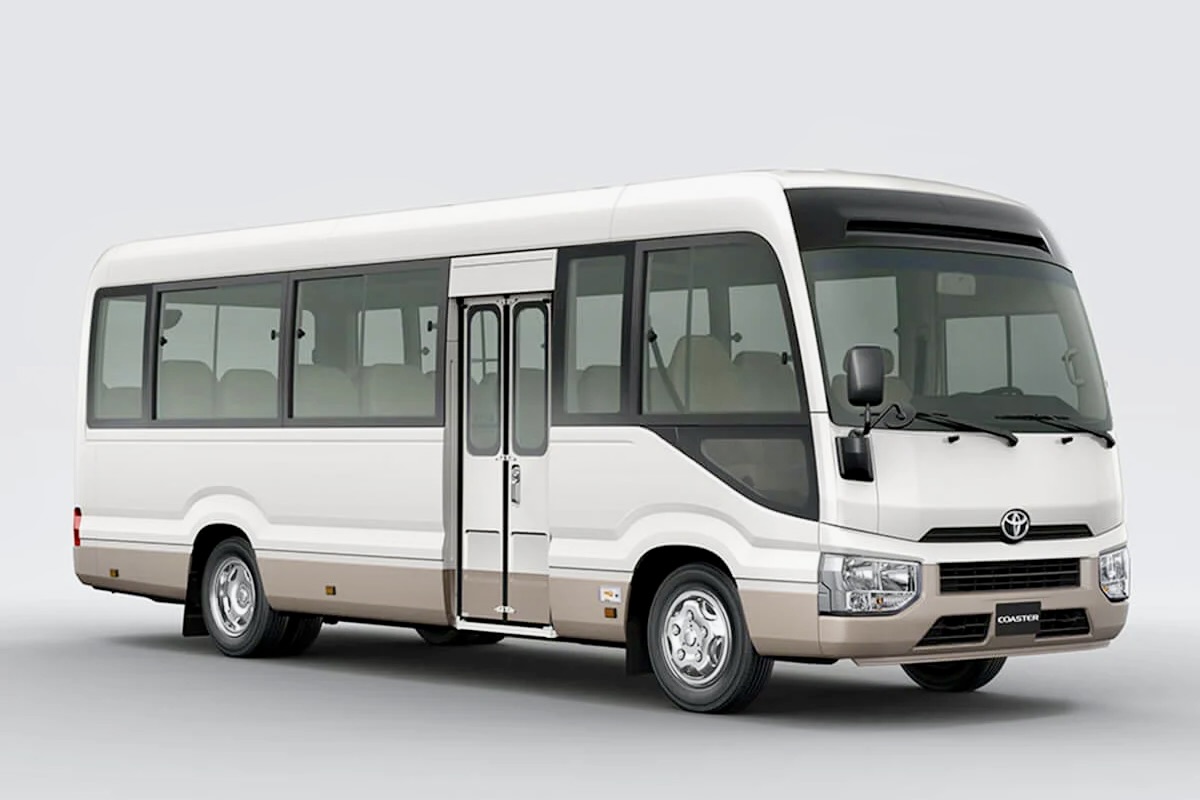
Tourist buses offer a middle ground with:
|
Tourist Buses |
Local Buses |
|
$10-20 per trip |
$3-7 per trip |
|
Fixed schedules |
Depart when full |
|
Assigned seating |
First come, first served |
|
A/C on newer buses |
Open windows for cooling |
|
Fewer stops |
Many random stops |
We typically recommend tourist buses for journeys between Kathmandu, Pokhara, Chitwan, and Lumbini. They depart on time (usually around 7 AM) and make reasonable rest stops.
Hiring private transportation for convenience
Nothing beats the flexibility of private transportation in Nepal. Having your own vehicle with a driver means you can stop for photos, avoid motion sickness on winding roads, and reach places off the tourist track.

A private car with a driver costs about $60-80 per day, while a jeep runs $100-150 daily. This might seem pricey compared to buses, but split between 3-4 travelers, it becomes reasonable.
We can arrange reliable drivers who speak English and know the best routes and hidden spots. They'll handle the challenging roads while you focus on enjoying the breathtaking scenery. For families or groups, this option offers comfort and convenience that can make your Nepal experience much more enjoyable.
Culinary Adventures in Nepal
Must-try traditional Nepali dishes
Nothing connects you to a culture like its food, and Nepal's cuisine is a delightful surprise for many first-time visitors. Dal Bhat, a hearty combination of lentil soup and rice with vegetable curry and pickles, is the national staple. We recommend trying it at least once during your stay – Nepalis often say "Dal Bhat power, 24 hour!"
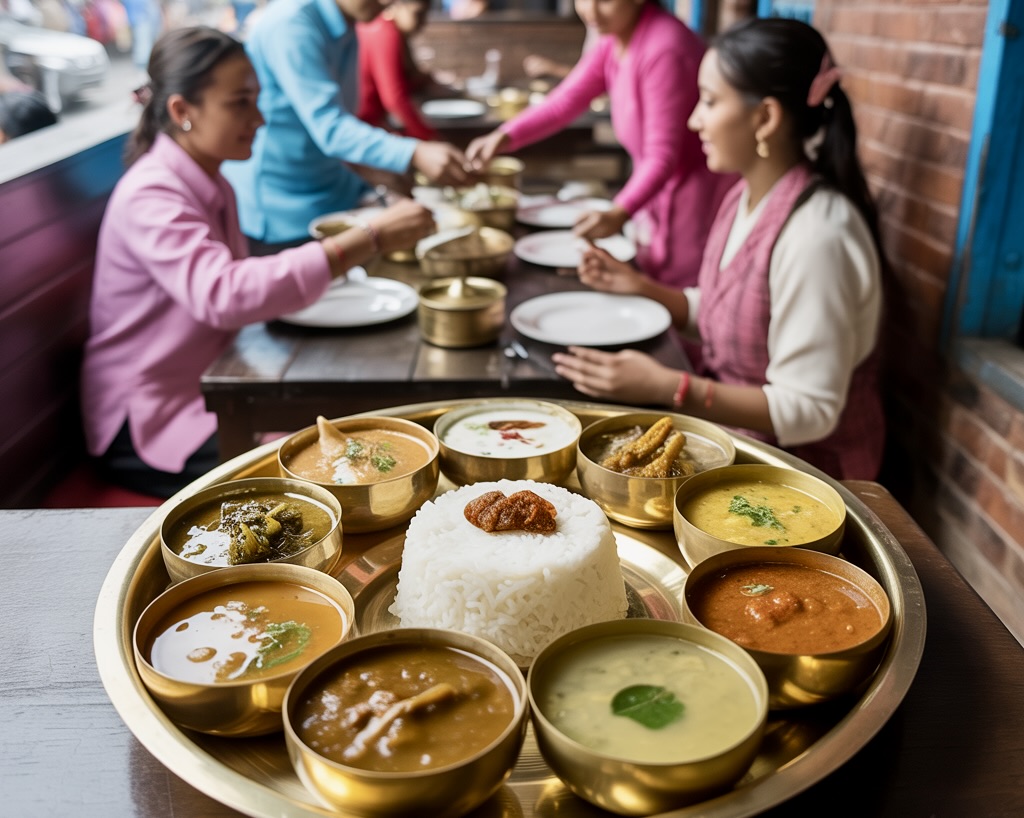
Momos are another must-try. These steamed dumplings filled with meat or vegetables have become Nepal's most beloved snack. We love them served with spicy tomato chutney!
Don't miss Sel Roti (sweet rice bread rings) if you're visiting during festivals, and Choila (spicy grilled buffalo meat) for meat lovers. For a quick bite, grab some Chatamari, often called "Nepali pizza" – a rice flour crepe topped with minced meat, eggs, and spices.
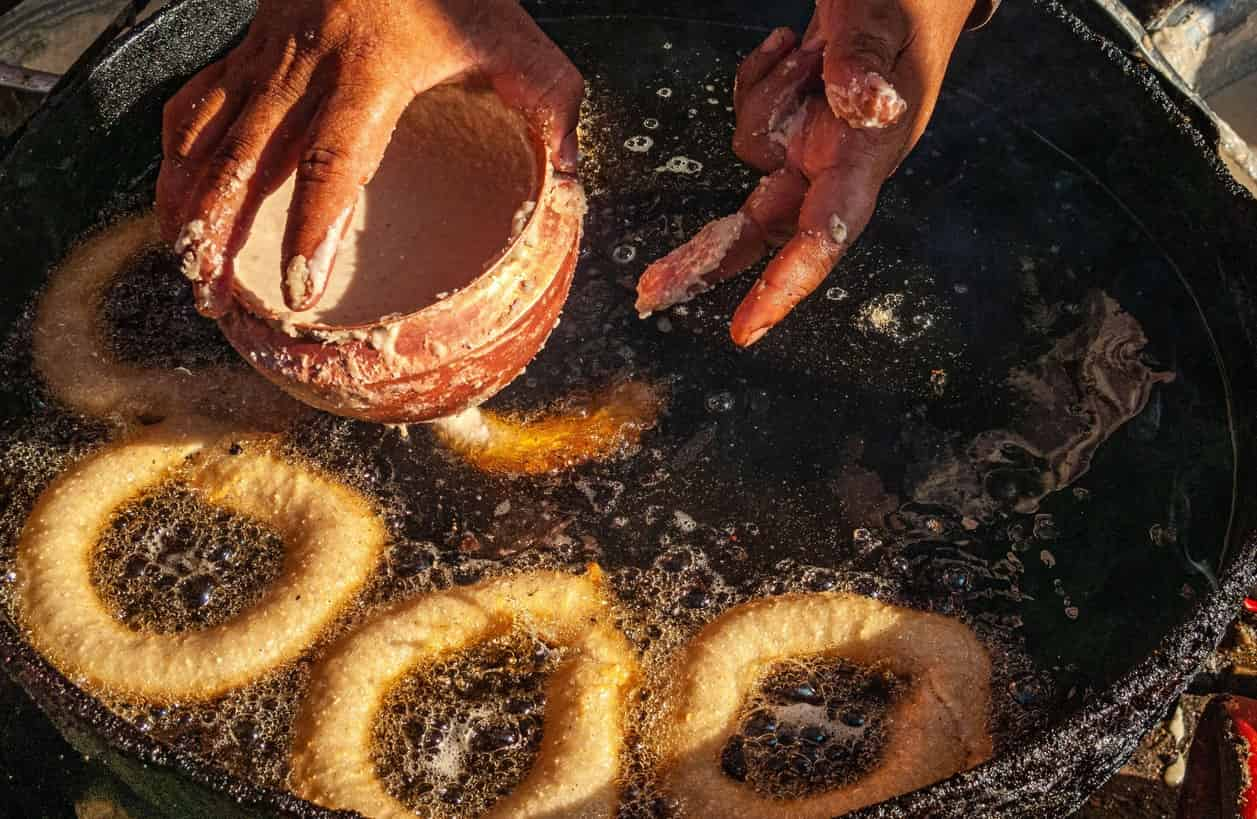
Food safety tips for travelers
The dreaded "travel tummy" can put a damper on your adventure. We always tell our guests to stick to bottled water and avoid ice in drinks unless you're sure it's made from purified water.
Street food looks tempting (and it's delicious!), but choose wisely. Go for freshly cooked, hot food from busy stalls where locals eat. If it's been sitting out all day, skip it.
Fruits? Absolutely! Just remember: "Peel it, cook it, or forget it." Fruits you can peel yourself (bananas, oranges) are generally safe.
We always carry hand sanitizer and use it religiously before eating. Simple habit, big difference.
Dining etiquette and customs
Eating in Nepal comes with its own set of customs. Traditionally, Nepalis eat with their right hand – the left is considered unclean. If you're invited to a local home, watch your host and follow their lead.
It's polite to wash your hands before and after meals. Many restaurants will provide a small bowl of water for this purpose.
When eating in a traditional setting, you might sit on the floor. Women often serve the food and wait until everyone else has eaten before eating themselves.
Don't be surprised if your host keeps refilling your plate – refusing food can be considered impolite. A simple way to indicate you're full is to leave a little food on your plate.
Vegetarian and special dietary options
Good news for vegetarians and vegans – you'll have no trouble finding amazing food in Nepal! With a largely Hindu population, vegetarian options are abundant and clearly marked on most menus.
For vegans, communication is key. Simply mention "ma vegan ho" (I am vegan) and ask for "na dahi" (no yogurt) and "na ghee" (no clarified butter).
Gluten-free travelers will find plenty of rice-based dishes, but should be cautious of momos and breads. We recommend carrying translation cards explaining your dietary restrictions.
Most tourist areas in Kathmandu, Pokhara, and even in trekking regions now cater to special diets. Many restaurants in tourist hubs offer everything from gluten-free to keto-friendly options – just ask!
Cultural Insights and Etiquette
Religious customs at temples and monasteries
We've noticed that first-time travelers to Nepal often feel a bit overwhelmed by the rich religious practices they encounter. When visiting temples or monasteries, always walk clockwise around religious structures – this is called "kora" and shows respect. Remove your shoes before entering any temple or monastery, and avoid touching religious objects or statues unless invited to do so.
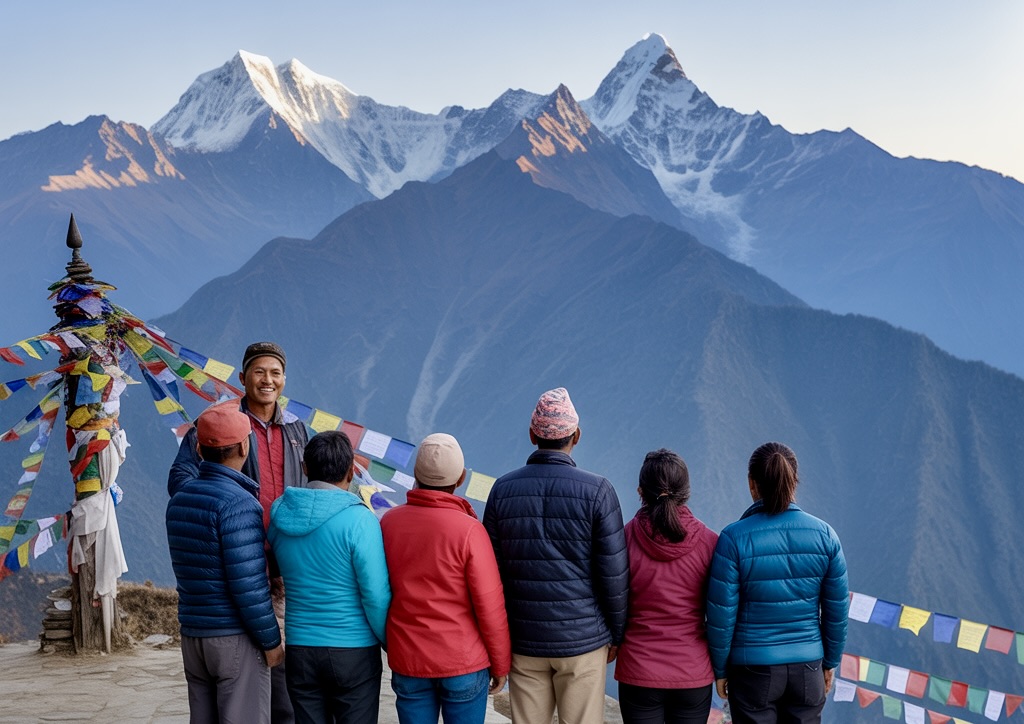
Avoid pointing your feet toward altars, religious images, or monks – it's considered disrespectful. If you're sitting in a temple, cross your legs or kneel rather than stretching them out. Women should avoid visiting temples during menstruation, as this is considered impure in Hindu tradition.
Photography protocols and permissions
Taking photos in Nepal isn't as straightforward as you might think! Always ask before snapping pictures of people, especially in rural areas where locals might have strong beliefs about photography. We recommend offering a small payment or showing them the photo afterward as a courtesy.
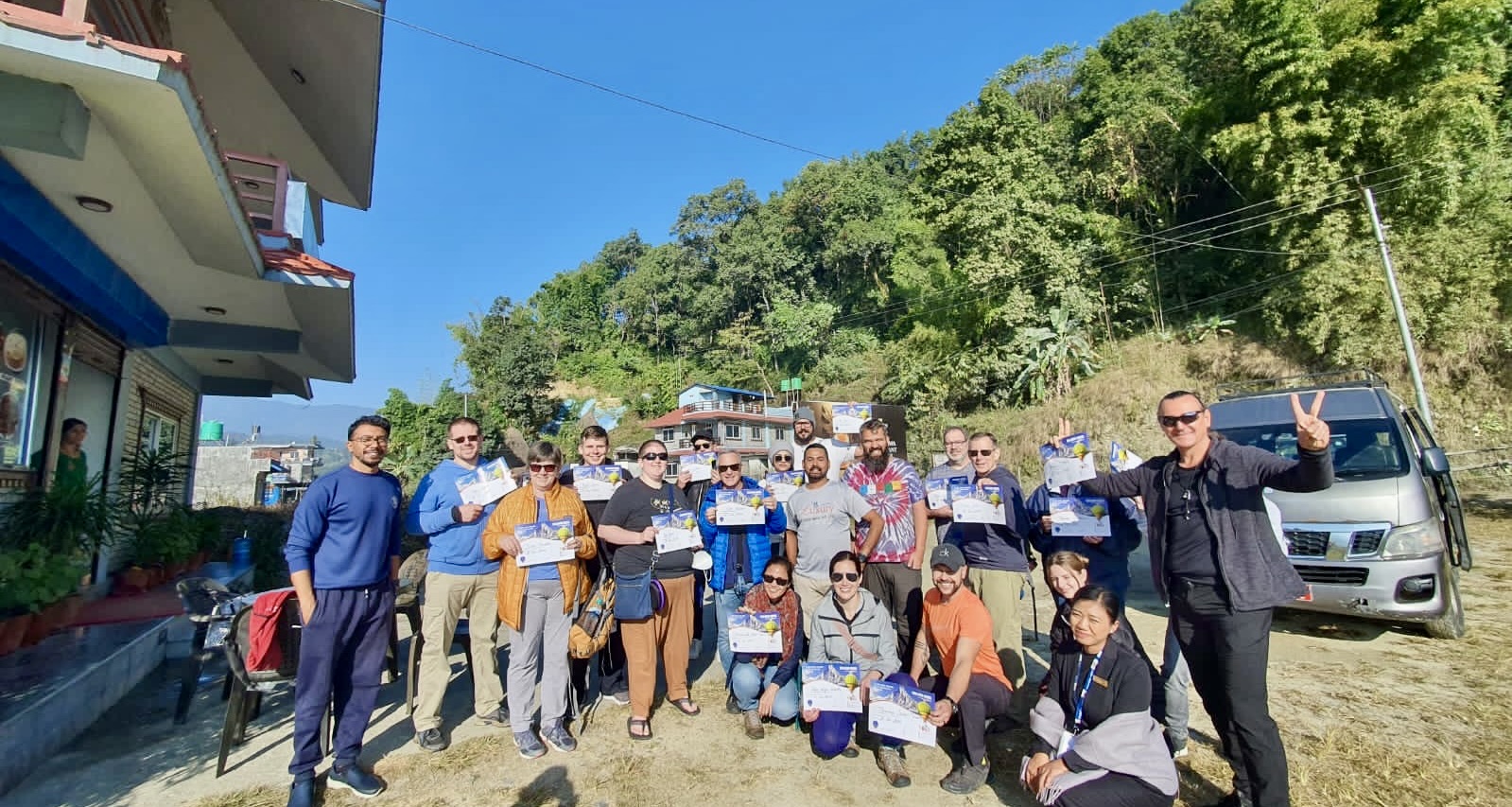
Inside temples and monasteries, photography rules vary widely. Some prohibit it entirely, while others charge a small fee. Look for signs or ask a local guide if unsure. Never take photos during active worship or ceremonies without explicit permission.
Appropriate dress and behavior
Nepalese culture values modesty, particularly in religious sites. We suggest covering shoulders, chests, and knees when visiting temples or conservative areas. Women might want to carry a lightweight scarf to cover their heads in certain religious settings.
Public displays of affection are frowned upon. Keep kissing and hugging in private spaces. When eating, use your right hand – the left is considered unclean. If invited into a Nepalese home, remove your shoes at the entrance and accept at least a small portion of any food or drink offered.
Gift-giving practices and interactions with locals
When visiting Nepalese homes, bringing small gifts like fruits, sweets, or educational items for children shows thoughtfulness. Avoid giving money directly to children, though – it encourages begging.
When meeting people, join your palms together at chest level and say "Namaste" – this greeting works in all situations. If someone offers you food or drink, accepting at least a small amount shows respect for their hospitality.
Bargaining is expected in markets, but we've found that starting at about 50% of the asking price and meeting somewhere in the middle works well. Remember that extreme haggling over tiny amounts means little to you but might matter significantly to the seller.
Safety and Practical Considerations
Emergency Contacts and Medical Facilities
We've seen our fair share of travelers who needed medical help in Nepal, and trust us, knowing where to go can make all the difference. Always save these emergency numbers: Police (100), Tourist Police (1144), Ambulance (102), and Fire (101).
In Kathmandu, CIWEC Hospital and Norvic International Hospital are our go-to recommendations for tourists. They have English-speaking staff and understand travelers' needs. Beyond the capital, medical facilities become more basic, so pack a comprehensive first-aid kit.
Altitude Sickness Prevention and Treatment
Here's the deal with altitude sickness – it doesn't care if you're super fit or not. We've watched even marathon runners struggle while their less athletic friends sailed through.
Preventing AMS (Acute Mountain Sickness) is pretty straightforward:
- Ascend slowly (no more than 500m elevation gain per day above 3,000m)
- Stay hydrated (but skip the alcohol)
- Consider taking Diamox if your doctor approves
- Follow the "climb high, sleep low" rule
- If symptoms hit (headache, nausea, dizziness, trouble sleeping), don't push through. Descend immediately – it's the only real cure.
- Avoiding Common Tourist Scams
- Nepal's generally safe, but we've noticed a few scams targeting first-timers:
Watch out for "friendly" locals offering to guide you to special shops or claiming your hotel is closed. Taxi drivers sometimes claim their meter is broken – always negotiate fares upfront or insist on the meter.
In Thamel, some shopkeepers might switch your purchased items during packaging. Double-check before leaving.
Internet Connectivity and Communication Options
Getting connected in Nepal is super easy now. We recommend grabbing a local SIM card at the airport (NCell or Nepal Telecom) – just bring your passport. Data is cheap, around $10 for 10GB.
WiFi is available in most hotels and cafes in Kathmandu, Pokhara, and even in teahouses on popular trekking routes like Everest Base Camp and Annapurna Circuit. The connection gets spottier as you climb higher, so download maps and important info beforehand.
Travel Insurance Recommendations
We've seen too many travelers face financial disasters after emergencies. Standard travel insurance won't cut it for Nepal, especially if you're trekking.
Look specifically for policies that cover:
- High-altitude trekking (above 4,000m)
- Helicopter evacuation (crucial for remote areas)
- Medical evacuation to your home country
- Coverage for adventure activities
World Nomads and SafetyWing offer good options for Nepal travelers. Remember, the cheapest policy rarely provides adequate coverage when you really need it.
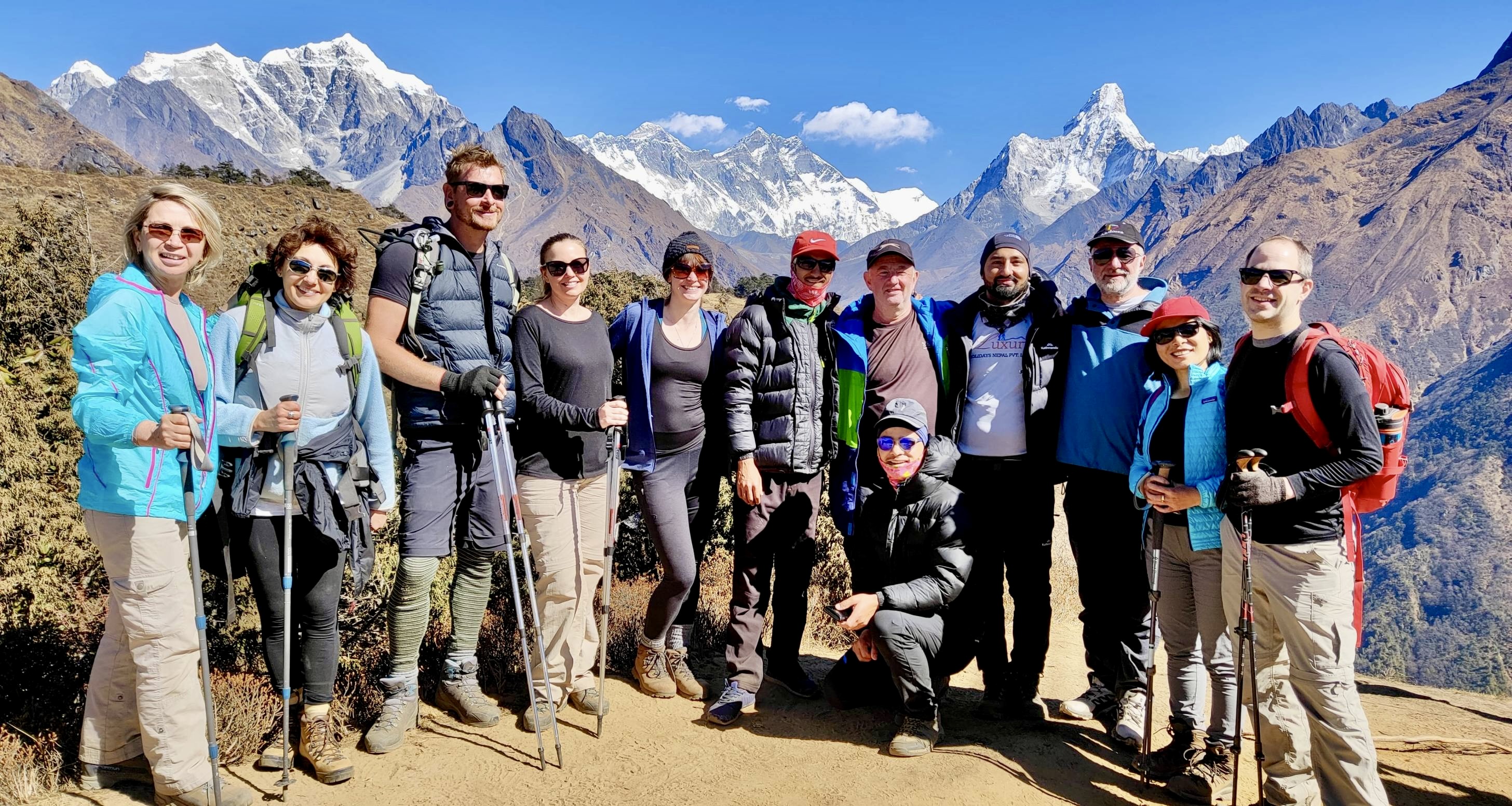
Embarking on your first journey to Nepal opens the door to a world of majestic Himalayan peaks, rich cultural heritage, and unforgettable adventures. From careful trip planning and exploring iconic destinations like Kathmandu Valley and Pokhara to experiencing beginner-friendly treks such as Ghorepani Punchak and Everest View, Nepal offers something for every traveler. Navigating local transport, savoring authentic Nepali cuisine, respecting cultural customs, and understanding safety considerations are all essential components of a successful visit.
As you prepare for your Nepali adventure, remember that this remarkable country rewards those who approach it with an open heart and mindset. The memories you create—whether watching the sunrise over the Himalayas, connecting with local communities, or finding spiritual solace in ancient temples—will stay with you long after you return home. Trust Luxury Holidays Nepal to transform your first visit into an enriching journey that balances adventure with authentic cultural experiences, ensuring your introduction to this Himalayan nation becomes the first of many trips to come.
Contact Luxury Holidays Nepal to craft your perfect Nepalese journey today.
If you need any further information, please contact us by email: [email protected], Phone: +977- 985 100 5129 (WhatsApp).

